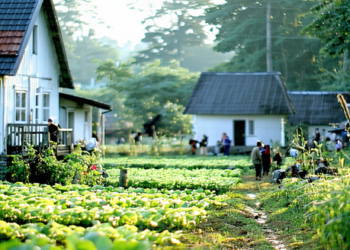Understanding the Goals of the Weatherization Program
The Federal Weatherization Assistance Program aims to improve energy efficiency for low-income households. It focuses on reducing energy costs by enhancing the thermal efficiency of dwellings, thus making homes more comfortable. Participants in the program often receive tailored advice on maintaining energy savings over the long term. The program’s primary goal is to lower energy bills, contributing to financial relief for economically disadvantaged families. By implementing energy-efficient technologies, residents can achieve significant savings on their utility expenses. Additionally, it aims to boost energy conservation, reducing the carbon footprint at a national level. This initiative not only supports individual households but also seeks to impact broader environmental and economic objectives, thereby aligning with national energy policies.
Eligibility Criteria and Application Process
Eligibility for the Weatherization Assistance Program primarily depends on household income, with priority given to families with elderly members, individuals with disabilities, or children. Additionally, some regions may have specific criteria based on local climate conditions. To ensure a seamless application, it’s important to gather all necessary paperwork ahead of time. Applicants need to provide proof of income such as pay stubs or tax returns. The application process typically begins with contacting the local weatherization agency, where individuals can receive guidance on documentation and program requirements. Once eligibility is determined, a comprehensive energy audit is conducted to assess necessary improvements. The program ensures fair access, aiming to help those genuinely in need.
Common Weatherization Techniques and Upgrades
The Weatherization Assistance Program includes several standard techniques, such as sealing air leaks, adding insulation, and upgrading heating systems. Air sealing involves caulking and weather-stripping to prevent drafts. Increasing insulation in walls, attics, and floors reduces energy loss, improving comfort levels. Experts often recommend these interventions as cost-effective solutions for long-term energy conservation. Replacing outdated heating units with more efficient models can significantly decrease heating costs. Homeowners are often surprised by how much they save on their utility bills after these upgrades. Additionally, installing energy-efficient lighting and appliances further ensures substantial energy savings. These upgrades not only enhance the home’s energy efficiency but also improve overall comfort and safety, contributing to long-term savings for residents.
Benefits of Participating in the Weatherization Program
Participating in the Weatherization Assistance Program offers numerous benefits, foremost being reduced energy costs, often resulting in substantial annual savings on utility bills. Improved energy efficiency enhances overall home comfort and safety, with better indoor air quality as a notable advantage. Additionally, these improvements can lead to a longer lifespan for your heating and cooling systems due to reduced strain. Furthermore, participants often experience increased home value due to these upgrades. On a broader scale, the program contributes to environmental sustainability by decreasing national energy consumption and emissions. It’s essential to recognize the long-term positive impact this program has on both personal and community levels. Collectively, these benefits foster financial stability and environmental responsibility, directly impacting the quality of life for program beneficiaries.
Future Developments and Program Expansion Plans
The Weatherization Assistance Program continues to evolve with plans for expansion and modernization to reach more households. Future developments include integrating cutting-edge technology and personalized energy solutions. Efforts are underway to enhance funding and partnerships, potentially involving public-private collaborations to increase program resources. As part of this strategy, the program is exploring innovative financing models to maximize impact. Additionally, expanding educational initiatives aims to raise awareness about energy conservation. It is crucial to engage community leaders to ensure the program’s success and local relevance. The program is set to broaden its scope to serve more communities, with priorities on underserved areas. Such expansions promise to amplify positive economic and environmental impacts while ensuring the program’s sustainability and accessibility.



